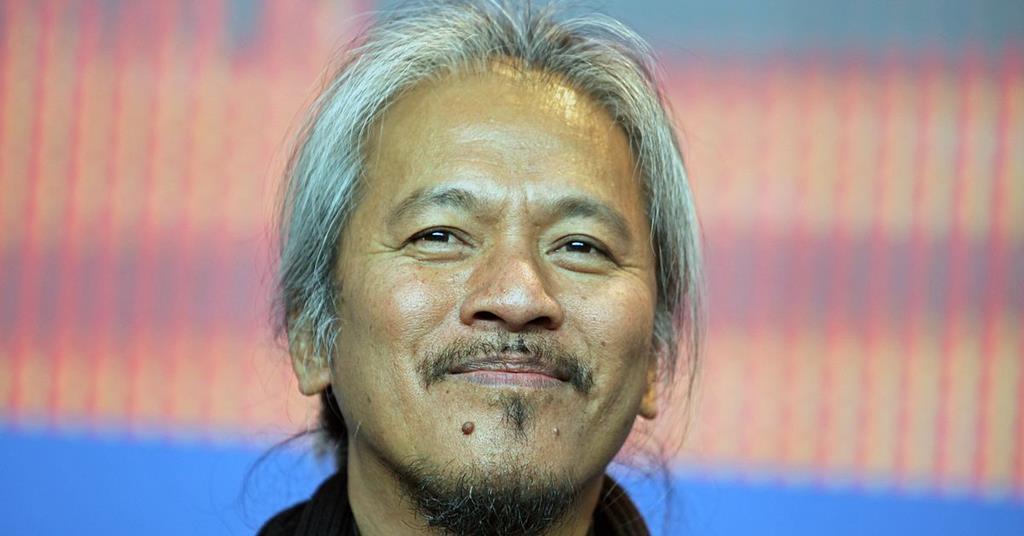Tagber: Dark Networks. Imaginaries of Shady Connections and the Global Underworld
Cesare Esposito, Scuola Normale Superiore di Pisa / Université Paris 1 Panthéon-Sorbonne
Organised by the German Historical Institute with the support of the Fritz Thyssen Foundation and the Centre d’histoire du XIXe siècle (Université Paris 1 Panthéon-Sorbonne), the conference “Dark Networks. Imaginaries of Shady Connections and the Global Underworld from the Nineteenth Century to the Present” explored representations of clandestine and conspiratorial networks in public and cultural discourses from the 19th century to the present. The conference showcased a broad interdisciplinary exchange among scholars in history, literature, political science, and cultural studies.
The event stood out for its ability to merge innovative methodological approaches with a transnational perspective in studying representations of the “dark underworld” and its multifaceted political dimensions. The central aim was to analyse how criminal, conspiratorial, and subversive networks have been imagined and represented in public and cultural discourses from the 19th century to the present, highlighting the role of narratives in shaping social and political paradigms. The opening remarks by the organisers—Sarah Frenking, Christoph Streb, Anne-Emmanuelle Demartini, and Mathilde Darley—underscored the importance of a transmedial and transnational perspective in studying representations of the underworld. Drawing on the legacy of scholars like historian Dominique Kalifa, the conference sought to explore how narratives of dark networks have shaped collective imaginaries and structured political and social discourses across different historical periods. Its stated purpose was to foster dialogue between diverse disciplines and methodologies, promoting an exchange between the history of representations and global history.
The core focus of the contributions was twofold: on the one hand, the analysis of dark networks, with particular attention to conspiracy theories and their manifestations in the global collective imagination; on the other, the relationship between representation and social reality, namely how narratives about dark networks intersect with tangible phenomena or emerge as ideological constructions intended to legitimise specific power structures. This was especially analysed by ELISA CAMISCIOLI (Binghamton) who underlined the gap between narratives of trafficking and the migratory movements of women for purposes of selling sex and MARGARITA LERMANN (Jerusalem) investigating crime and policing of Jews acting in grey zones of night-time activities in the Habsburg Empire. Together with ROXANE BONNARDEL-MIRA´s (Tours) presentation, who mentioned the newly founded agency against forged papers, these talks were able to show how ideas of dark networks lead to new forms of policing. Dark networks, in fact, are not only a subject of historical investigation but also a fertile ground for understanding the social composition of danger and the discursive strategies employed to define and fight it. Their transversality is particularly evident in their ability to traverse geographic, cultural, and temporal boundaries, adapting to different contexts while maintaining a surprising consistency in representational modes.
Rather than offering a comprehensive account of the Dark Networks conference, this review aims at examining the primary themes that emerged. The relevance of literary authors in the production of imaginaries was a central theme in the analysis of the Camorra’s portrayal in post-unification Italy through the works of authors such as Marc Monnier, Alexandre Dumas, and Maxime du Camp, as highlighted by FRANCESCO BENIGNO (Pisa). These works combined elements of socio-political denunciation and narrative sensationalism, contributing to the creation of an image of the Camorra as a sprawling and omnipresent criminal network capable of infiltrating state structures and threatening the stability of the newly formed Kingdom of Italy. SARAH FRENKING’s (Washington D. C. / Potsdam) study delved into the myth of transnational networks engaged in the traffic in women, focusing on the journalists’ Joachim Joesten’s work, which fuelled collective fears through representations of an international racket dedicated to the abduction and deportation of young women. Both these contributions examined the pivotal role of presumed intrigues aimed at undermining the established order. The debates highlighted consistent elements in these narratives, which revealed the presence of alleged conspiracies enabling the organisation of illicit trafficking or seeking to weaken or overthrow the state. The centrality of media production in crafting the topos of dark networks demonstrated how portrayals of criminal conspiracies by newspapers, literary works, and films have significantly contributed to the constitution of the contemporary collective imagination surrounding phenomena such as organised crime and illegal drug and sex trafficking. SÉBASTIEN LE PAJOLEC (Paris) examined the consistency of representations of dark networks through the lens of Italian cinema during the anni di piombo. The remarkable diffusion of Italian giallo films centred on the collusion between organised crime, finance, and politics during the most intense socio-political tensions of the Italian Republic was identified as an emblematic example of contemporary mass media’s capacity to channel and rework collective anxieties specific to historical circumstances. The crucial role of authors and directors and their media representations of dark networks was not only a central theme in this presentation but also in many other contributions throughout the conference. The descriptions developed by authors and journalists between the 19th and 20th centuries proved central to constructing narratives about conspiracies attributed to political enemies. Additionally, CHRISTOPH STREB (Paris) pointed out the role of scholars and social sciences in developing such narratives.
The representation of anti-government conspiracies, described as the product of intricate and transnational dark political networks, was not necessarily tied to a specific revolutionary or counter-revolutionary ideology but rather to a broader dynamic of symbolic instrumentalization. The conference highlighted how similar imaginaries became rooted in the most heterogeneous frameworks, from 19th-century Europe to early 20th-century Japan, and how these representations were used to describe a variety of political enemies. On the one hand, the idea of an extensive anti-government dark network served as the foundation to portray anarchists and communists as a tentacular network driven by the common goal of triggering a revolution. This imaginary is reflected, for instance, in the case of Japanese anarchist associations, often described by agents of the imperial police through the effective metaphor of the kraken, a monster with infinite tentacles (ROBERT KRAMM (Munich)). On the other hand, a similar logic fuelled the myth of the White International, widespread between 1820 and 1880. According to this narrative, legitimist, Bourbon, and Carlist plots were not interpreted as isolated episodes tied to specific political contingencies but as manifestations of a single transnational counter-revolutionary network committed to destabilising the foundations of European liberal states. This alleged international organisation, intertwining criminality and reactionary political forces, was described as a pervasive and underground enemy (ALEXANDRE DUPONT (Strasbourg)). The comparison between the numerous perspectives presented during the conference thus underscored the complexity and transversality of these imaginaries, which emerge as articulated constructs capable of adapting to diverse milieus and stimulating political narratives that had a profound impact on collective discourses and perceptions. In addition, these imaginaries also produced specific figures ot international networks such as the violent and mad woman who personified the anarchist threat, as CAROLYN EICHNER (Milwaukee) argued.
The debate arising from the interventions highlighted how the elaboration of representations of dark networks was not a unilateral process but rather a phenomenon subject to the interpretations of all the actors involved. These representations, in turn, not only reflected collective fears but were also capable of generating concrete actions conceived as responses to the perceived threat. The close link between the reception of the dark network model and the practical reactions aimed at countering the dangers it evoked constituted a central theme of exploration during the conference. The presentations highlighted not only the complexity involved in the creation of such imaginaries but also the role of public reactions and specific political organisations in shaping their reception and impact. One example is the societal paranoia that pervaded the British population during the Second World War, fuelled by the widespread suspicion that German spies were omnipresent in the United Kingdom. Episodes such as the renewed interest in graffiti deemed to be potential coded messages exchanged among enemy spies were analysed as paradigmatic examples. These cases, presented by ARIANE MAK (Paris), reveal the crucial role of collective reception in shaping and reinforcing imaginaries such as those of shady connections and, by extension, dark networks. These dynamics thus emphasise how the creation and dissemination of these imaginaries were not limited to their original production but were further amplified by the often-irrational responses of a society already steeped in fears and uncertainties.
The importance of the political and spatial conjuncture in the constitution and representation of dark networks was extensively explored during the conference. The analysis of specific cases, intertwining micro- and macro-historical perspectives, allowed for the articulation of a nuanced framework of the political, social, economic, and cultural environments in which such imaginaries developed most intensely. The contributions offered a diverse panorama of historical contexts, shedding light on the dynamics that facilitated the formation of these collective scenarios. A particularly illuminating example was the case of the bas-fonds of Marseille in the early decades of the 20th century, which demonstrated how the same urban geography could be interpreted in diametrically opposing ways: on the one hand, as the epicentre of a revolutionary and liberating globalisation; on the other, as a symbol of rampant criminality in the so-called "Chicago-on-the-Mediterranean." LAURENCE MONTEL’s (Poitiers) presentation explored the connection between representations of Marseille’s dark networks and the Stavisky affair, wherein Stavisky was depicted as a spider weaver, a central figure in a web woven from local criminality and high finance. Another significant case was the 1989 Kopp Affair, which shocked Switzerland with revelations of collusion between politics, economics, and organised crime. This episode, discussed by MAURICE COTTIER (Fribourg), provided valuable insights into the influence of historical conjunctures on representations of dark networks. During a period marked by extraordinary transformations in international arrangements, the Kopp Affair contributed to consolidating the notion that the primary threat no longer stemmed from communist interference but from the corrupting power of criminal networks, perceived as intent on creating a clandestine state. These examples represent only a fraction of the cases analysed during the conference, which allowed for an exploration of the complex relationship between historical practices and imaginaries. The discussion highlighted the importance of situating each representation within its specific socio-political framework, an indispensable element for fully understanding its nature and deep roots.
The conference highlighted the relevance of historical specificity in defining the theme of dark networks and its multiple manifestations, and clearly demonstrated the constant presence of recurring images within these transnational imaginaries. Among the most pervasive representations, the metaphor of the octopus or the spider's web proved particularly effective in illustrating politico-criminal conspiracies. In addition to the previously mentioned case of Japanese anarchists associated with the kraken, the conference addressed the example of the dreaded Jewish-Bolshevik conspiracy. For fascist groups and governments active between the First World War and the 1930s, this conspiracy embodied a network woven by a spider intent on orchestrating an international revolution (DANIELE TORO (Bielefeld)). Similarly, the international network of the Sicilian-American mafia boss Lucky Luciano, involved in drug trafficking, was partly mythologised by the media of the time. Joachim Joesten’s book The Luciano Story (1954) and sensationalist articles in the magazine True Crime contributed towards portraying Luciano as the head of a criminal octopus stretching across the Mediterranean (ANDREAS GUIDI (Paris)).
The persistence of these animal images, such as the spider and the octopus, was repeatedly emphasised during the three days of the conference, accentuating the recurrence of such elements in the imaginary of dark networks and their deeply transnational character. Equally significant was the constant presence of specific figures in these representational models. Among the traditionally included categories, the imaginary of a Jewish network was recognised as a central element, linking modern antisemitism with the socio-political conspiracy theories of the 19th and 20th centuries. SUHAIL GHARAIBEH (New York) analysed the rise of antisemitic conspiracy discourse by the end of the 19th century in that sense. The idea of Jewish participation in criminal and subversive networks was explored not only in relation to the 20th-century imaginary of the Judeo-Bolshevik conspiracy but also in more circumscribed contexts, such as the illegal trafficking of art objects (PAUL FRANKE (Marburg)). This perspective allowed the discussion to delve into the points of connection between the various transnational representations of dark networks, highlighting the possibility of considering them as a paradigmatic example of cultural globalisation. And also KOSTIS GKOTSINAS (Athens) presented the interpretation by the League of Nations of the international Opium trafficking as an enormous octopus network.
The variety and depth of the presentations offered a profound contribution to the analysis of dark networks, outlining a complex and multilayered panorama that interweaves the history of representations, specific case studies, and emblematic figures. The conference's conclusions raised crucial issues that had not been addressed in previous presentations, such as the role of homosexuality and masculinity within the paradigms of dark networks and the necessity for cultural historians to engage with the history of sensibility. These perspectives were identified as tools to further expand the understanding of such phenomena, suggesting that numerous research pathways remain open, offering new and intriguing paths for inquiry. Another focal point of the conclusions was the recognition of the event’s principal achievement: the revitalisation of cultural history in dialogue with global history, inspired by Dominique Kalifa. Reference was made to Les Lendemains de la bataille, a work in which Kalifa reflected on the future of cultural history and the representation of criminality. After decades of playing a pioneering methodological role, Kalifa suggested that cultural history had progressively lost its prominence in favour of new historiographical approaches, urging scholars to draw inspiration from the example set by global and international history. The conference thus aimed to renew this methodological tradition by embedding it within an interdisciplinary and transnational framework. Through the dialogue between cultural history and global history, the event offered unprecedented perspectives and still largely unexplored research horizons, representing a significant initial example of how these approaches to the theme can enrich one another.
Conference Overview:
Section I: The Construction of a New Imaginary of Shady Connections
Chair: Anne-Emmanuelle Demartini (Paris)
Francesco Benigno (Pisa): The Evil Sect in Nineteenth-Century Europe. Loans and Influences
Alexandre Dupont (Strasbourg): L’internationale blanche, un “réseau obscur”? Représentations et répression de l’internationalisme contre-révolutionnaire (1820-1880)
Section II: From a Crisis of Social Knowledge to Imaginaries of Dark Networks
Chair: Sarah Frenking (Washington D. C.)
Suhail Gharaibeh (New York): “Les célébrités des sphères interlopes”. Les dessous du nouveau Paris, selon Édouard Drumont et Cie. 1864-1904
Christoph Streb (Paris): “Modern Sin” in a “Webbed Social Life”: Modernity and the Downsides of Connectivity in the Social Psychology of Edward Alsworth Ross
Section III: Anarchists as Social Figures of the Underworld
Chair: Corentin Marion (Paris)
Carolyn J. Eichner (Milwaukee): “Impulsive Insanity of a Mildly Homicidal Type”. Louise Michel and the Threat of International Dissident Networks
Robert Kramm (Munich): Black Kraken. Anarchism, Imperial Japan, and Decentering Connectivity
Section IV: Port Cities as Spaces of the Underworld
Chair: Eleonora Marchioni (Paris)
Laurence Montel (Poitiers): Circulations internationales et “envers” marseillais au prisme du genre et de la “race” (années 1920-1930)
Kostis Gkotsinas (Athens): “The Greek Opium Kings”. Representations of Drug Smugglers in Interwar Greece
Section V: Networks Against Networks: Imaginaries and Practices
Chair: Christoph Streb (Paris)
Margarita Lerman (Jerusalem): A Fine Line? Gray Areas in 19th Century Policing of Criminalized Networks
Daniele Toro (Bielefeld): From “Judeo-Bolshevism” to the “Spider’s Web”. Conspiracy Narratives and the Emergence of Transnational Fascist Dark Networking in the 1920
Section VI: From Imaginaries of Dark Networks to Migration Control
Chair: Mathilde Darley (Paris)
Roxane Bonnardel-Mira (Tours): “Faux papiers”. Ce que l’imaginaire du réseau obscur fait au contrôle de l’immigration à Paris dans les années 1920
Elisa Camiscioli (Binghamton): The “Traffic in Women” and Migration Control in Early Twentieth-Century Europe and the Americas
Section VII: Traffickers as Social Figures of the Underworld
Chair: Alexandre Bibert (Paris)
Paul Franke (Marburg): Dark Mirrors, Broken Gods, and Fearful Plots. Images and Imaginaries of Legal and Illegal Networks and Practices of the Global Art Market between 1860-1930
Andreas Guidi (Paris): Lucky Luciano’s Mediterranean Shadow. Smuggling Networks in the Wake of (Under)World War II
Section VIII: Fictions and Sensations of the Underworld
Chair: Nicolas Picard (Paris)
Sarah Frenking (Washington D.C.): “Vice, Inc”. Sensationalist Journalism and the “Traffic in Women” in Germany, France and North Africa in the 1950s
Sébastien Le Pajolec (Paris): Italia Oscura, secrets à l’Italienne. Le dévoilement des réseaux dans le cinéma populaire italien (1968-1978)
Section IX: Tracing Networks, Imagining the Enemy
Chair: Laurence Badel (Paris)
Ariane Mak (Paris): Hunting Down Enemy Spy Codes. Suspicious Graffiti in Britain during the Second Word War
Maurice Cottier (Fribourg): Whitewash and “Organized Crime”. Switzerland’s Crisis-Ridden Transition from the Cold War to the Era of Globalization










